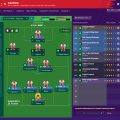A good gaming PC requires a strong RAM of 8GB and above. The best CPU to use should be Intel Core i7-9700K or above. You must also consider using a good graphics card and having enough storage. Your choice of the operating system should be Windows 10 or above. These are excellent features, but their cost might be on the higher side.
If you are working on a student budget, you can still build a strong PC for students without spending all your savings. Consider shopping for components that are cheaper but compatible. Get ready with your tools and prepare space for assembling everything. It will only take you 3 to 4 hours to have a running gaming PC.
Shop for a good CPU
The power of your gaming student PC is determined by the CPU and GPU. These two might take at least 50% of your budget. You can get a high-end CPU, but considering your budget, there are other options. An AMD Ryzen will give you the same value as the higher Intel. It is okay to buy an Intel if your budget allows it and you want to boost your experience.
What’s most important is to buy a CPU that has the standard gaming specs. Make sure its multi-core processor is strong and compatible with the motherboard. Gaming programs demand a lot of power from the motherboard. Speed in a gaming PC college use desktop is determined by the CPU. Avoid going for the older types if you want maximum speed. Building a gaming PC for students from scratch is time-consuming. Playing PC games is enjoyable but time-consuming too. You might realize you have spent your time writing essays on gaming. This should not worry you, though, because you can get help online and get the results you need. This is something I’ve done often when I need to get my essay done fast. I pay someone to write my essay on EduBirdie while I focus on other tasks. They have a friendly minimum price per page that fits within your budget. Besides, communication with writers is easy whenever you want to do a follow-up.

Be selective with the Graphics Card (GPU)
When you shop for a student discount gaming PC, GPU is a critical thing to check. When building your gaming student PC, take time to shop for the GPU. Like the CPU, it is another high-cost component. A mid-range GPU will be okay for your student budget. The card determines video game quality giving you the best experience. You may consider buying 5700 XT (AMD), GTX 1080 Ti, OR 1660 (Nvidia).
Buying the RAM
If you need to open several programs at a time, a stronger RAM is better. An 8GB RAM and above will work perfectly. For the sake of upgrading, make sure the motherboard has more than one RAM slot. A gaming PC college student computer with 4GB RAM will not serve you well.
The Motherboard
The motherboard gives you the best opportunity to save significantly. High-end products could be a better option. However, you don’t need to strain yourself too much. Go for the mid-range but be sure it’s compatible with the CPU and GPU. The Gigabyte Z690 Aorus is an excellent mid-range motherboard.
Storage
Gaming PCs for students require more space to accommodate the latest games. You may opt for HDD or SSD, although SSDs are costlier. An SSD gives you more speed but to save on cost, go for an HDD. Don’t hesitate to buy an SSD if your budget allows it.
The power supply (PSU)
This is another component that will save you money if you do more window shopping. The best recommendation for gaming student PCs is 600W and above. Do not limit yourself to this range if your budget is tight. You can opt for a 500W or 400W, and they give you a super performance.
The Case
You need a chassis to house all the components you have bought. If they are all compatible with each other, you should not have trouble having a working PC for students in a few hours. Go for a midrange case to save yourself a considerable amount of money. Each component should seamlessly fit in its place and work in harmony with the rest.
Conclusion
Building a powerful gaming PC for students is easy when you have all the components. Avoid the high-end components because they will demand a higher budget. Go for the mid-range components because they are budget-friendly. The CPU and GPU might take half of your budget. The other components, such as RAM, motherboard, and storage, will save you more money.
More Gaming Content
Liked our article? For more awesome gaming content like this, check out our gaming category pages. They’re jam packed with reviews, guides and opinion pieces. For any tech recommendations and reviews, hit up our tech pages.







